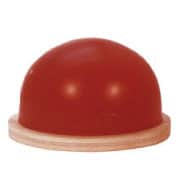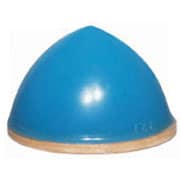Reasons to Consider a Servo-Driven Pad Printer
Comments Off on Reasons to Consider a Servo-Driven Pad PrinterWhile a programmable servo-driven pad printer will cost more than comparable electro-pneumatic models, they provide the highest degree of accuracy, control, adaptability and flexibility in a more compact area, and they include additional valuable features.
The improved servo-driven technology allows engineers to choose linear motion devices that:
- provide the highest degree of accuracy
- increase speeds while maintaining quality
- reach the required torque in a given application
- save and store programs for convenience and accuracy on future print runs
- pick up and print an image wherever it needs to be and assure that the user produces more impressions with less waste and fewer errors in less time. That’s a win-win.
In the most sophisticated printers, the horizontal print head movement can be controlled and programmed at each of the two functions — ink pick-up from the cliché and print position on systems featuring independent pad actuators. You can also repeat or change the control values for each plate stage/print station, a major improvement that provides individual adjustment in a multicolor system with hair-splitting accuracy and repeatability.
Couple this with the ability to provide independent pad vertical movement using linear actuators that work independently. This eliminates pad interference when printing oversize parts, offering the convenience of using different pad shapes and heights at every position in a system. Are you starting to see what this can do for the future of your business yet?
Are you sure it will help me?
At PPMOVT, we carefully evaluate each application to engineer the best and most cost effective solution with the end user in mind. We execute them flawlessly on our own manufacturing floor. After all, when all is said and done, it is the printing system’s performance, reliability and user friendliness that really counts.
The same servo-driven actuators described above are also used on Pick-and-Place automation devices that provide part loading/unloading to/from holding fixtures, part conveyance and other movement accessories, with total precision even when variable speeds are required throughout the motion. Automatic pad changing can be included to allow the use of multiple pads in a selected routine. That’s technology. That’s what Pad Print Machinery of Vermont can do for you.
What do I do next?
Call us in for an analysis. That’s fun for us. We won’t sell you something that doesn’t make you better and stronger. Program in Pad Print at 1-800-272-7764, or use Live Chat on our Home page https://www.epsvt.com
Please make sure the coffee’s hot!

 An important variable to consider in quality pad printing is the pad size, especially as it relates to the image size. In pad printing, the larger the pad size used, the less the image is likely to distort in the printing process.
An important variable to consider in quality pad printing is the pad size, especially as it relates to the image size. In pad printing, the larger the pad size used, the less the image is likely to distort in the printing process. Two solutions to this problem are available:
Two solutions to this problem are available: